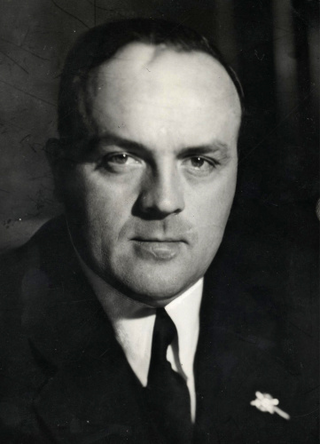Dr. Ludwig Josef Draxler

Personalia
Born:
Died:
Profession:
Persecution:
Imprisonment 13.03.1938 - 02.04.1938,
Dachau concentration camp 02.04.1938 - 15.03.1939,
Imprisonment 15.03.1939 - 10.08.1939,
Prohibited from working 31.12.1938
KZ Number:
Memberships
Curriculum Vitae
Ludwig Josef Draxler was born in Vienna as the legitimate son of Josef Ludwig Draxler, a senior civil servant, and Theresia, née Schmied. After elementary school, he attended a humanistic grammar school in Vienna-Landstraße. During the First World War, he reached the rank of first lieutenant in Air Regiment No. 1. Draxler then studied law at the universities of Innsbruck and Vienna. In 1919, he joined the student fraternity Corps Rhaetia. Together with Ernst Rüdiger Fürst Starhemberg, who later became head of the Heimatschutz, he was a member of the Freikorps Oberland and took part in the battles in the Upper Silesian voting area.
After completing his doctorate in 1922, Ludwig Draxler initially worked as a lawyer and defense attorney. He became vice president of the Lower Austrian Trade Association and a member of the board of directors of several companies, such as Hirtenberger Patronen- und Metallwarenfabriks AG, Österreichische Creditanstalt and Radio Verkehrs AG. In 1928, he joined the Heimatschutz and became a lawyer and consultant to the federal leadership of the Heimatschutz. In 1930, he set up his own law firm. In 1931 he married Martha Wolfram and subsequently became the father of four children. In 1934, he became Vice President of the Austrian Credit Institute for Public Enterprises and Works, in whose reorganization he was involved.
In 1934, Ludwig Draxler rose to become a member of the State Council and the Bundestag, where he became Chairman of the Finance and Budget Committee.
On 17 October 1935, he became Finance Minister (during this time, he was represented in the State Council and Bundestag by a substitute member). When the influence of the Heimatschutz in the government of Kurt von Schuschnigg is pushed back, this also means the end for Draxler as Finance Minister on November 3, 1936. However, he remained a member of the State Council and the Bundestag until Austria's downfall in March 1938.
On March 12, 1938, he witnessed the invasion of the German Wehrmacht in Vienna and the downfall of a free and independent Austria. Ludwig Draxer was arrested by the Gestapo on March 13, 1938 and deported to the Dachau concentration camp on April 2, 1938 on the so-called Prominent Transport. On March 15, 1939, he was transferred from there back to Vienna to Gestapo custody or the Regional Court I, from which he was released on August 10, 1939. His assets were confiscated by the National Socialists in the course of his arrest and he was removed from the list of lawyers on December 31, 1938. After his release from prison, he found work as an in-house counsel at Dresdner Bank.
Where Ludwig Draxler experienced the liberation of Austria in May 1945. After the war, he was re-registered as a lawyer on December 12, 1945 and from then on worked as such again. Among other things, he represents the Habsburg-Lothringen family, headed by Otto von Habsburg-Lothringen. He is also the administrator of the Starhemberg estates and a lawyer for West German companies and the Fiat Group. In the 1950s, he became Chairman of the Supervisory Board of Hirtenberger AG and sat on the supervisory boards of numerous other companies. He joined the Austrian People's Party (ÖVP) and the ÖVP-Kameradschaft der politisch Verfolgten und Bekenner für Österreich.
Citations
Wikipedia unter https://de.wikipedia.org/wiki/Ludwig_Draxler
Wiener Stadt- und Landesarchiv (WStLA)
Dokumentationsarchiv des österreichischen Widerstands (DÖW)
Österreichische Nationalbibliothek (ÖNB)
ÖVP-Kameradschaft der politisch Verfolgten und Bekenner für Österreich (KPV)
